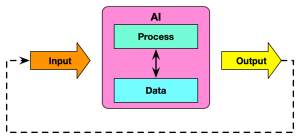The Internet Time Alliance Memorial Award in memory of Jay Cross is presented to a workplace learning professional who has contributed in positive ways to the field of Informal Learning and is reflective of Jay’s lifetime of work.
Recipients champion workplace and social learning practices inside their organization and/or on the wider stage. They share their work in public and often challenge conventional wisdom. The Award is given to professionals who continuously welcome challenges at the cutting edge of their expertise and are convincing and effective advocates of a humanistic approach to workplace learning and performance.
We announce the award on 5 July, Jay’s birthday.
Following his death in November 2015, the partners of the Internet Time Alliance – Jane Hart, Charles Jennings, Clark Quinn, and Harold Jarche – resolved to continue Jay’s work. Jay Cross was a deep thinker and a man of many talents, never resting on his past accomplishments, and this award is one way to keep pushing our professional fields and industries to find new and better ways to learn and work.

The 9th Annual Internet Time Alliance Jay Cross Memorial Award for 2024 is presented to Ryan Tracey
Over the past 25 years Ryan has consistently demonstrated a resilient approach to, and advocacy for, workplace learning. He speaks pragmatically about supporting learning with an irreverent yet supportive style. His blog, e-Learning Provocateur is a source of insight. He’s recognized for looking beyond formal learning to social and informal learning, recognizing that learning happens, and the job of L&D is to support and facilitate it, not to be completely responsible for it.
Ryan has served in multiple roles for organizations across industries and government, moving from academic products through organizational learning & development and innovation roles to his current position as capability manager at Macquarie Group. As a learning professional, Ryan has also demonstrated support for colleagues. He has pointed to opportunities, given advice, and served generously.
Ryan has also contributed widely to the global profession through membership of the editorial board for the Association for Computing Machinery’s eLearn Magazine and other committees.
His children’s book ‘Ryan the Lion’ which explores themes of social tolerance, self-esteem and personal identity reflects Ryan’s own beliefs in human-centred learning and development.
Personally, he has been a gracious host to several of us during visits to Sydney.
For his contributions and continual advocacy for going beyond instruction Ryan is the 2024 recipient of the award.




